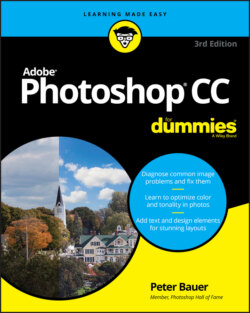Читать книгу Adobe Photoshop CC For Dummies - Peter Bauer - Страница 36
Formats for commercial printing
ОглавлениеYou’re the Photoshop master of your office. Everyone knows that you understand everything about digital images. So you’re the right person to create the company’s new brochure. Except you’re a photographer. Or you’re a web designer. Or you’re actually pretty new to Photoshop. And you don’t have a clue about preparing images for a commercial printing press.
Here’s what you need to know about file formats for those CMYK (cyan/magenta/yellow/black) color images that you’re sending to the print shop:
TIFF: TIFF is generally a solid choice. Use TIFF for photographic images that don’t contain any type layers.
EPS: Choose EPS if your image has type. Don’t flatten or merge the type layers before using Save As to create the EPS. In the EPS Options dialog box, make sure to select the Include Vector Data check box to ensure that your type prints perfectly. If you reopen an EPS file in Photoshop, your type layers get merged. Don’t! Instead, make sure to save your original file as PSD and, should you need to make changes, open the PSD and create a new EPS file when you’re done editing.
PDF: PDF offers support for spot color channels, alpha channels, and paths — options not supported by EPS. (Spot channels are used with custom colors, and alpha channels store information about transparency in the image.) If your file uses any of these features, choose PDF over EPS, if your print shop accepts PDFs. When saving as PDF, the PDF Options dialog box offers Preserve Photoshop Editing Capabilities. If you select the option, the PDF file reopens in Photoshop with layers and editable type.
PSD: Use PSD only if you’re adding the image file to a project in Adobe InDesign CC. Don’t send PSD files to a print shop unless specifically requested to do so by the print shop.
